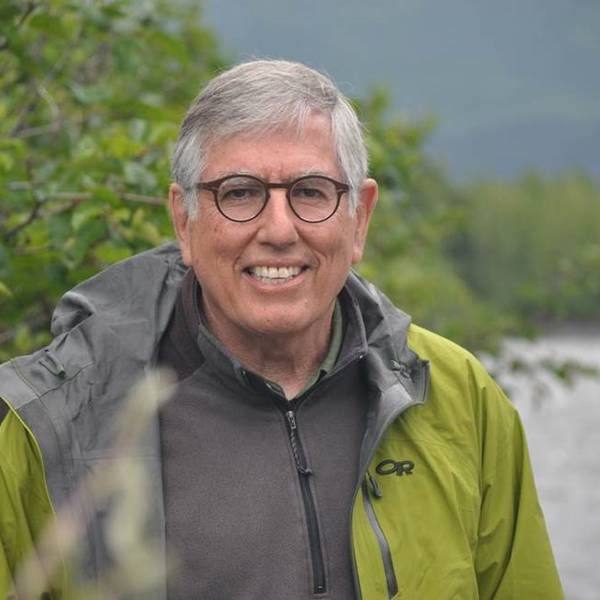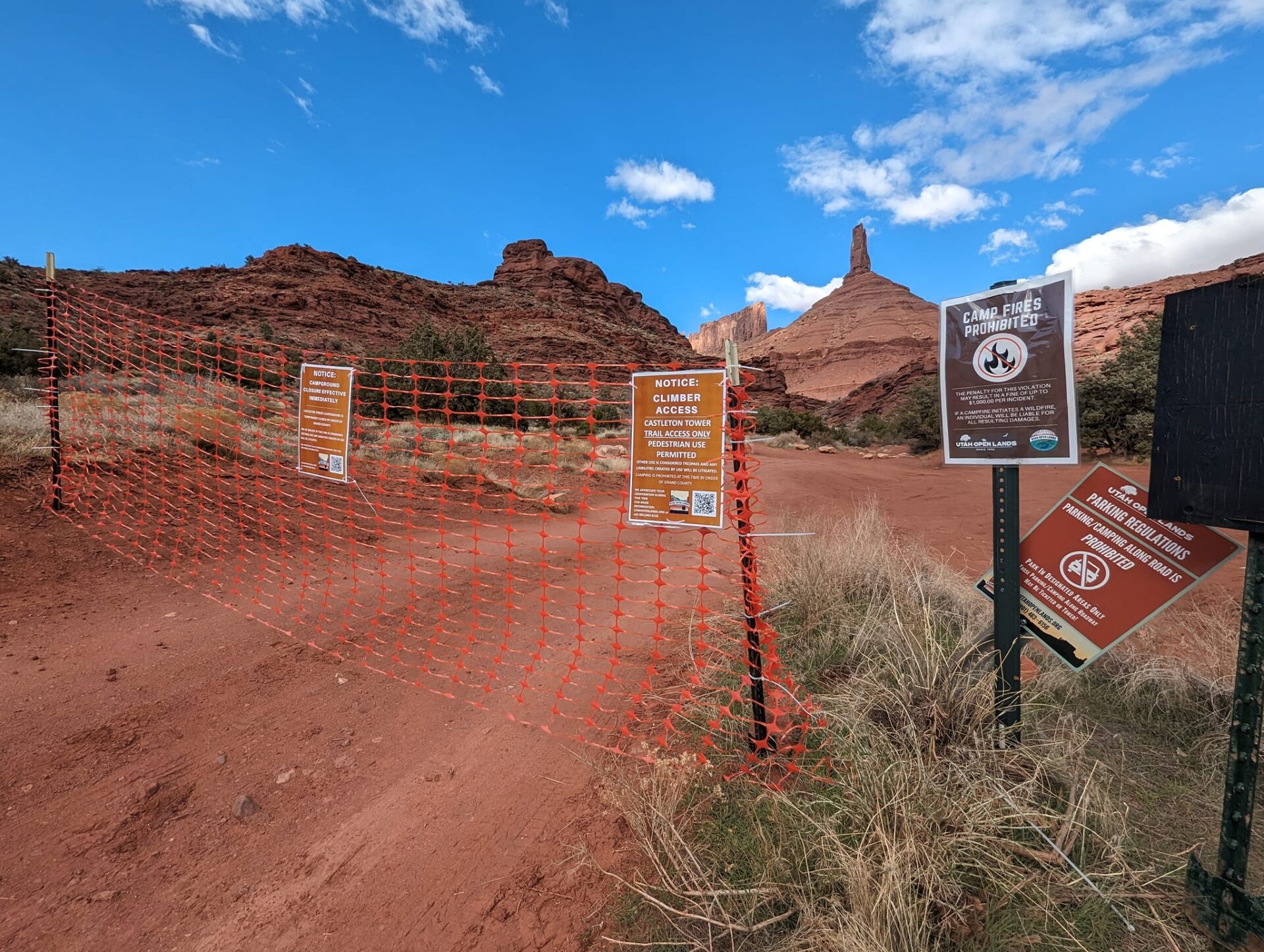For a week, Moab’s federal land management agencies – the National Park Service, Bureau of Land Management and U.S. Forest Service, collectively responsible for almost three-quarters of the land in Grand County – faced a daunting prospect: President Donald Trump’s Jan. 23 executive order suspending all federal civilian hiring made no exception for the seasonal hiring that those agencies rely on to be fully staffed during the summer.
Then on Tuesday, Jan. 31, the U.S. Office of Management & Budget and Office of Personnel Management released a memo laying out exemptions to the hiring freeze, including “seasonal employees and short-term temporary employees necessary to meet traditionally recurring seasonal workloads.” The memo may be good news for this summer, but it offers little clarity on the president’s directive to reduce the overall size of the federal workforce in years to come.
The National Park Service manages just 3.7 percent of lands in Grand County, but Arches and Canyonlands national parks together attract over two million visitors annually, driving hundreds of millions of dollars in local spending. Paul Henderson, the former assistant superintendent of the National Park Service’s Southeast Utah Group – which includes Arches, Canyonlands, Natural Bridges National Monument and Hovenweep National Monument – said seasonal hiring is vital to these parks’ operations.
“Seasonals are the absolute backbone of the Park Service, as far as that direct interface between the visitor and the resource,” Henderson said. “If you see somebody out there in the field in green and gray, chances are they’re a seasonal.”
According to National Park Service Southeast Utah Group Superintendent Kate Cannon, the agency intends to hire 64 seasonal workers for Arches and Canyonlands this year.
“We understand that seasonals will be hirable, but we have to wait until we get clearance from OMB [Office of Budget & Management], and that will slow it down,” Cannon said.
The memo exempting seasonal hires from the freeze requires agencies to inform the Office of Management & Budget in writing before hiring can begin, which will create a delay. But an even larger delay, Henderson explained, could come from the need for background checks.
Background checks for prospective federal employees are centralized, conducted by the Office of Personnel Management. At best, Henderson said, a “quick and dirty” check for criminal history might take two weeks. During peak times, when agencies are submitting numerous requests, results can take three to four months.
And if all of the national parks have been waiting to be able to submit background check requests, and do so at once?
“It’ll be a nightmare,” Henderson said.
With springtime visitation increasing each year, having seasonal employees trained and ready by May at the latest is crucial, he added.
“For parks like Arches and Canyonlands, this comes at an incredibly awkward time, because usually by the end of January you had everything nailed down,” Henderson said.
Cannon said she believes the parks will have seasonal employees in place by the time visitation ramps up.
“We expect to be typically staffed for the summer,” Cannon said.
Less certain is what will happen to the Southeast Utah Group’s permanent staff. According to Cannon, the parks are lacking two permanent law enforcement rangers, multiple maintenance workers, an archaeological technician, a biological science technician and a budget analyst, among others. When – or whether – the National Park Service will be able to fill these vacancies is unknown.
David Nimkin, senior regional director for the National Parks Conservation Association’s Southwest office, said the hiring freeze adds to the strain on the National Park Service’s operations.
“On a national level, the number of employees within the National Park Service is 10 percent less today than it was in 2010,” Nimkin said. Meanwhile, visits to all parks have risen steadily. At Arches and Canyonlands, yearly visitation doubled in the last decade.
“It’s about visitor experience; it’s about public safety,” Nimkin said. “Not having the rangers and the law enforcement personnel to be able to help people … In terms of even just cleaning toilets, it just becomes increasingly more and more difficult.”
If staffing remains constant – or is cut – as visitor numbers continue to grow, Nimkin said, the National Park Service will be forced to shift more of its limited resources toward upholding the basic visitor experience, and away from engaging with local communities, conducting scientific research, or dealing with deferred maintenance issues.
“It just is not a sustainable future,” he added.
The Canyon Country District of the Bureau of Land Management, which oversees 66 percent of the land in Grand County, is also confronting permanent staff vacancies and delays in its seasonal hiring. The district’s responsibilities range from regulating oil and gas extraction to maintaining hiking and mountain biking trails. The district typically hires about 13 temporary seasonal employees each year, primarily in the firefighting program, according to spokesperson Lisa Bryant.
“Consistent with guidance received to date, the public may see announcements for temporary seasonal jobs; however, we won’t be able to make actual job offers until we receive further direction,” Bryant said.
The district also employs “career seasonals” – permanent employees who work six to 10 months each year. Approximately a third of the district’s 35 career seasonal positions are currently vacant, most of these in the firefighting and recreation programs. Vacant, too, are full-time permanent positions in visitor services, archaeology, civil engineering, environmental planning, fire dispatch, and geographic information systems.
“The BLM Canyon Country District will do our best to provide quality customer service and carry out our mission despite ongoing vacancies and the temporary hold on hiring,” Canyon Country District Manager Lance Porter said.
Bryant emphasized that the Moab and Monticello field offices have already been working to spread out the district’s workload by offering youth internships, in partnership with organizations like American Conservation Experience, and partnering with volunteers, who contributed nearly 10,000 hours of service to various projects in 2016. Right now, the agency is waiting for further clarification on how the hiring freeze and the order to reduce the federal workforce will be implemented long-term, she said.
Officials from the U.S. Forest Service, which oversees 2.4 percent of the county’s land, declined to comment on the impact of the hiring freeze. Manti-La Sal National Forest Public Affairs Specialist Rosann Filmore provided a statement from the U.S. Department of Agriculture, the Forest Service’s parent agency.
“USDA Acting Deputy Secretary, Michael Young, has exempted several critical public safety related positions from the Presidential Executive Order Hiring Freeze to ensure a safe food supply, fire-safe communities, safe and secure public lands, and rapid emergency response to natural and human-caused disasters,” the statement reads. An attached list of exempted positions includes both wildland firefighters and law enforcement officers.
Prior to the hiring freeze, the Forest Service’s Moab/Monticello Ranger District was advertising approximately nine seasonal positions in its trail and recreation crews and wildlife and botany programs, scheduled to begin in May and June. The district did not state whether these positions will still be offered.
Agencies face delays and uncertainty as guidance trickles in from feds
For parks like Arches and Canyonlands, this comes at an incredibly awkward time.




